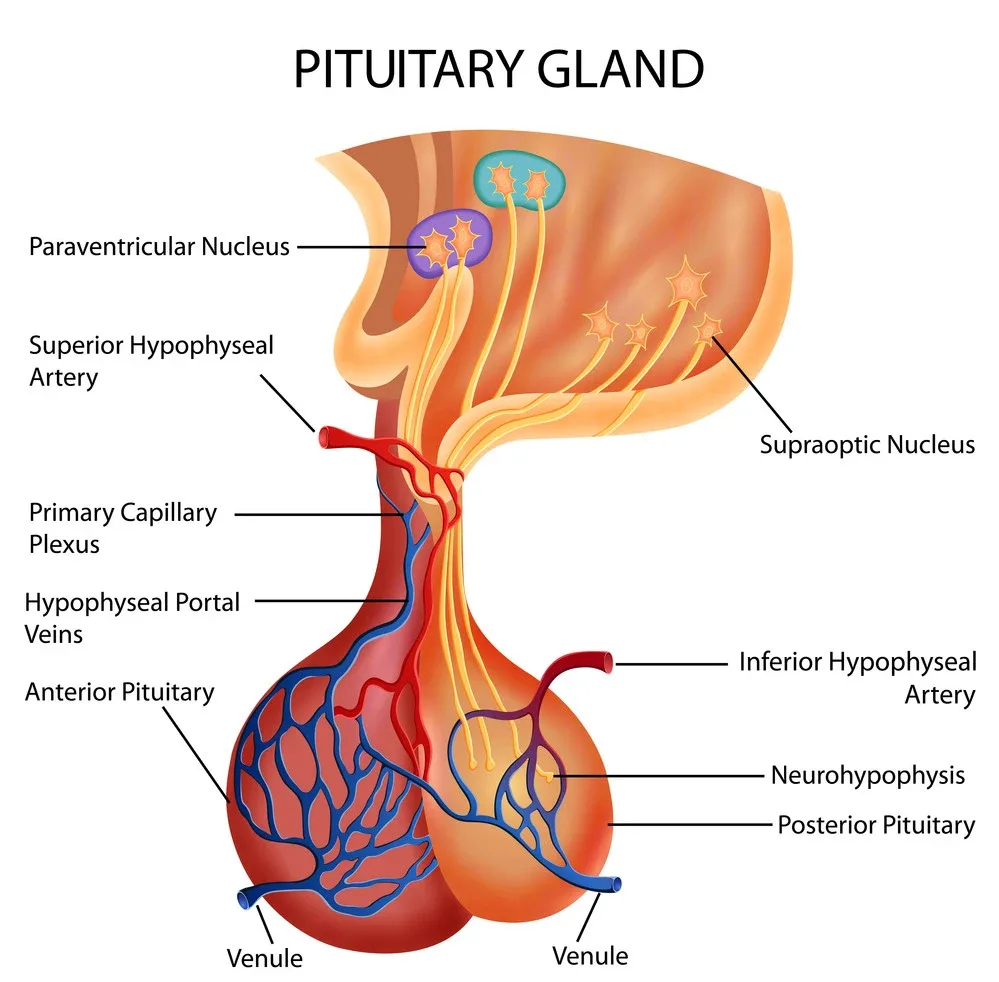Which gland in the endocrine system is involved in dwarfism?
Houston Endocrine Center2022-12-07T14:31:54+00:00
In the endocrine system, many glands produce hormones. These glands are located in different parts of your body, each having a role to play. One such gland is the pituitary gland, located in the brain. There are two types of dwarfism: one, which results from a tumor in the pituitary gland (hypopituitarism), and one, where growth hormone deficiency happens due to an abnormality with genes involved in growth hormone production (idiopathic short stature).
Pituitary dwarfism

Pituitary dwarfism is a condition that causes abnormal growth and can be caused by genetic mutations. The pituitary gland is located at the brain’s base, producing hormones that control growth and development.
Pituitary dwarfism affects both children and adults. In infants, this condition causes an abnormally small size (dwarfism). The onset of puberty may cause further growth problems if not treated properly.
What is dwarfism?
Dwarfism is a condition in which the body is physically smaller than average. It can affect one or more body parts, including the brain and bones.
In pituitary dwarfism, also known as pituitary hypoplasia, part or all of the pituitary gland does not develop properly. The pituitary gland produces hormones that help control growth and development. If it doesn’t work properly, this causes short stature (dwarfism).
Pituitary dwarfism may be present at birth (congenital) or develop later (acquired).
Pituitary dwarfism is usually an inherited disorder. It may be passed down through families or occur when two parents pass on a harmful mutation to their child.
Causes and symptoms
A mutation in the SOX3 gene causes dwarfism. This gene controls the growth of bones and cartilage, so it’s involved in producing both tall and short people. In people with dwarfism, this gene doesn’t produce enough protein for normal bone growth.
Dwarfism can cause an infant to grow to a normal size but then stop growing after puberty. Symptoms may include:
- Short stature (a person’s height)
- Delayed puberty (the point at which adolescents develop secondary sex characteristics like body hair and breasts)
- Sexual development concerns
Diagnosis
Your doctor will run a physical exam and may order blood tests to evaluate your hormone levels. Genetic testing can also identify a specific gene mutation that causes your condition. MRI scans can show whether the pituitary gland is abnormal. At the same time, other imaging tests can help rule out other disorders that cause short stature and delayed puberty (such as diabetes or hypothyroidism).
Genetic testing may be recommended if your family has a history of pituitary disorders. This can help determine if your condition is inherited or caused by a random mutation. Your doctor may also recommend a brain MRI to rule out tumors or other structural abnormalities.
Treatment
Treatment for pituitary dwarfism is usually not needed. The condition may need treatment if the child has other health problems or if their growth is slowing down. In this case, treatment is usually human growth hormone (HGH).
This treatment can help increase the child’s height and bone development. A doctor will prescribe HGH injections or a synthetic form of it. They may also recommend regular exams to monitor how the child is doing with treatment.
Prevention
There is no known prevention for pituitary dwarfism. The only way to prevent this condition is to test parents and relatives of children with pituitary dwarfism so they can be screened before having more children.
Parental concerns
If you have dwarfism and thinking about having a baby, talk to the doctor about the risks. Dwarfism is a genetic condition that can be passed on to children. Your doctor can tell you if there’s any chance your child might have dwarfism as well.
If you’re worried about how tall your child will grow, talk to them about their growth and development as they age. This information may help give you an idea of what they should look like by their teens or twenties—and if they aren’t taller than 4′ 10″ (147 cm), it may help explain why this is normal for them!
Conclusion
As you can see from the discussion above, dwarfism is a complex condition that can have many causes. However, it is important to remember that an abnormality in the endocrine system causes not all cases of short stature. Other factors, such as environmental insults or genetic disorders, can cause dwarfism.
